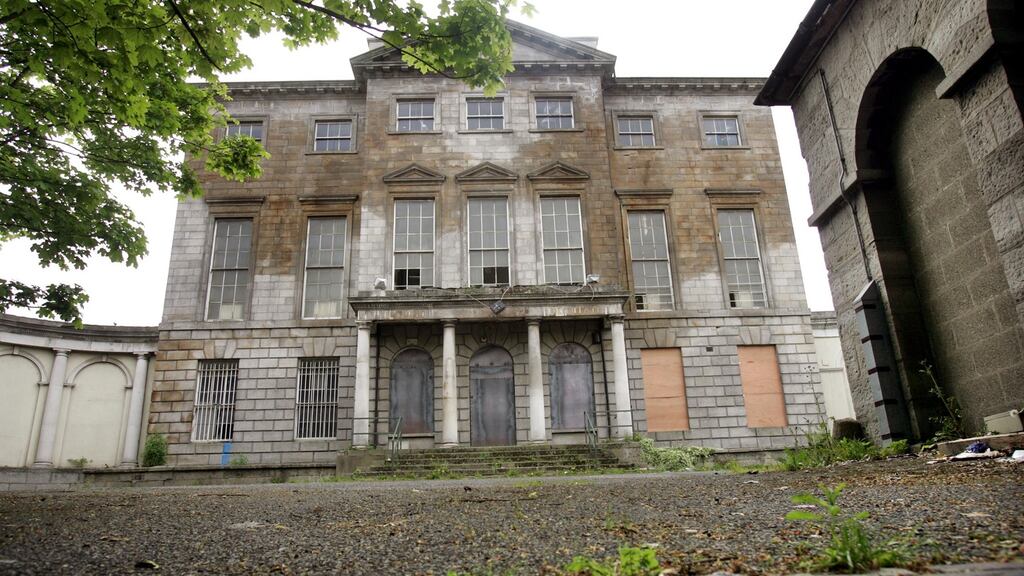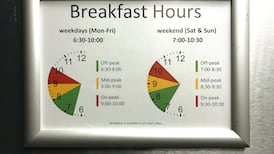As Dublin City Council scrambles for plans to do something, anything, in the city so that people can safely enjoy their lives this summer – while cities such as Cork press on with pedestrianisation and outdoor plans – we need to look to the future so that public space, recreation space and facilities that bring people joy are embedded in the capital, not just temporary measures.
Last week, I participated in a community consultation process with many others on a new “local community safety partnership” between Dublin City Council and the Department of Justice, which is asking the question, “How can we make the north inner city a safer place?” That the pilot project is led by the Department of Justice speaks to how “safety” is framed around policing, crime and street violence. The key to “safety” in a community is addressing poverty, inequality and the opportunities access to education provides. There’s a reason the Department of Justice isn’t rolling out a pilot project of this nature in Dublin 4.
Safety should also encompass an acknowledgement of the threat that gentrification, unobtainable private student housing and hotel developments pose to existing communities grappling with a housing crisis. Astonishingly, there is one unit of “emergency accommodation” for every 57 residents in the northeast inner city. Safety also means places young people can feel safe – in parks, playgrounds, sports facilities and other recreation spaces, as opposed to streets and canal banks.
Corporate gentrification
Besides addressing the fundamental issues of poverty and deprivation, the north inner city also needs to be flooded with the kind of budget and ideas that moves the area away from the corporate gentrification that serves no one bar tourists and visiting students. Why is it so much easier to build a hotel in Dublin 1 than a skate park? Why is it easier to build another block of luxury student accommodation rather than a large playground? Why do residents of the north inner city not deserve the kinds of things other parts of Dublin take for granted? Five years ago, as reported by the Dublin Inquirer, there was one tree per 317 residents in Ballybough, and one tree for every four residents in Sandymount.
There are opportunities everywhere in the north inner city, but they need the right ideas, the best plans, and money from Government. There have been improvements to bike lanes in this part of the city, which is welcome, but we need to be thinking much bigger and well into the future.
All summer, young people from the area swim in the Liffey and Grand Canal Dock. Can we not provide these children with an outdoor pool and diving area?
There are four very obvious places where ambitious plans to combine public housing with public recreation and cultural facilities should be happening right now. Number one: Tolka Park. Last week, Bohemians FC announced progress on the redevelopment of Dalymount Park in Phibsboro, securing a grant of almost €1 million from the Department of Tourism, Culture, Arts, Gaeltacht, Sport, Media and Whatever You’re Having Yourself, to get designing and planning. Dublin City Council bought Dalymount Park from Bohs in 2015, a steal at €3.8 million.
Up the road at Tolka Park, where Shelbourne FC lives, the wrangling around ownership was somewhat cleared up when the council reacquired the grounds and leased the site to Shels. Bohs will move to Tolka while work is under way at Dalymount, and after that Shels will move to Dalymount too, leaving the Tolka Park grounds on Richmond Road essentially up for grabs. So what will happen to the site?
Ridiculous plan
Number two: scrapping the council’s ridiculous plan for a whitewater rafting site in the IFSC. The city needs outdoor public pools. The demand is clear. All summer, young people from the area swim in the Liffey and Grand Canal Dock. Can we not provide these children with an outdoor pool and diving area? It would be much cheaper to develop, much cheaper to participate in, and much more in tune with the needs of people who live in the area.
The Hendrons' Building, a 1940s building which used to house many artists' studios, recently – thankfully – had planning refused for the scourge that is 'co-living'
Number three: Aldborough House on Portland Row is one of the most spectacular Georgian buildings in Dublin, yet it has been allowed fall into dereliction. Once the second-largest private residence in the city after Leinster House, this site got planning for a €30 million office development, which of course now seems ridiculous. This needs to be revisited and repurposed as a public amenity.
Number four: Broadstone Depot was recently restored to the tune of €15 million. The Victorian station building would be a fantastic venue for occasional cultural events. Across the road is the Hendrons’ Building, a 1940s building which used to house many artists’ studios, and recently – thankfully – had planning refused for the scourge that is “co-living”. This area would be a great nighttime destination for culture and recreation, especially now that it’s made more accessible by the Luas.
So let’s get going. By auditing sites primed for public recreation in the north inner city, the area could be transformed, not with flashy projects for tourists, but for brilliant facilities for and by those who come from, live in and move to the area.










